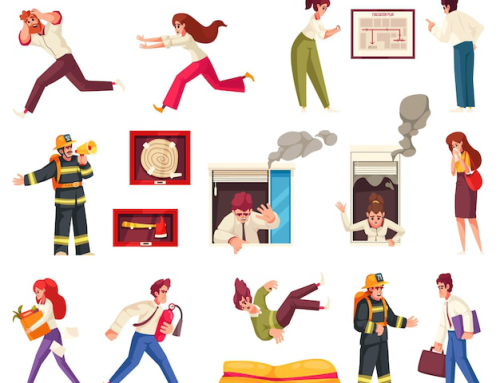As Artificial Intelligence (AI) continues to advance, it is transforming workplaces across various sectors. AI’s potential to enhance productivity and optimize operations is undeniable.
However, this transformation brings new challenges, particularly concerning safety. For employers in British Columbia, ensuring a safe working environment is crucial due to stringent workplace safety regulations.
This blog delves into the safety implications of AI in the workplace, discusses compliance with BC’s “taking reasonable care” principle, and outlines best practices for safe AI integration.
Plus, we highlight how Metro Safety Training Services can assist employers in enhancing job satisfaction and ensuring compliance with BC safety laws.
The Growing Need for Workplace Safety
Despite the diligent efforts of employers to create safe work environments, work-related incidents and health concerns persist. According to the Association of Workers’ Compensation Boards of Canada, there were notable changes in workplace safety statistics in 2023.
The total number of claims accepted decreased by 6.80 percent, falling to 16,143 from 17,321 in 2022. Despite this decrease, the total number of workers covered increased to 409,158 in 2023 from 400,392 the previous year, indicating a growing workforce.
However, while overall claims decreased, there are still significant concerns:
- Accepted No Time Loss Claims: These claims decreased slightly to 8,870 in 2023 from 9,156 in 2022.
- Accepted Time Loss Claims: These decreased to 7,256 from 8,148 in 2022, reflecting a positive trend in reducing incidents that cause workers to miss time from work.
Moreover, workplace fatalities remain a grave issue, with 29 recorded in 2023 compared to 39 in 2022—a decrease of 25.64 percent. These fatalities spanned various industries in Saskatchewan.
Notably, 10 of these deaths were due to occupational diseases, with half resulting from asbestos exposure. Additionally, nine fatalities were attributed to motor vehicle collisions, and the remaining 10 were due to medical complications from workplace injuries, heart attacks, and traumatic events.
These statistics underscore the ongoing need for proactive changes in workplace safety practices. Despite improvements, the presence of fatal incidents and serious injuries highlights the importance of continuous efforts to enhance workplace safety.
Potential Hazards of AI in the Workplace
While Artificial Intelligence (AI) offers promising solutions to improve safety conditions, enhance hazard detection, and create safer working environments, their integration also poses several potential hazards that require careful consideration:
1. Physical Safety Risks
Automated machinery and robotics can malfunction or behave unpredictably, leading to accidents and injuries. Ensuring these systems are reliable and safe is crucial.
2. Psychological Risks
AI can cause stress and anxiety among employees concerned about job security and changes in their roles. While most Canadians use AI for their work, statistics also note that 71% believe that AI threatens their jobs.
3. Data Security Risks
AI systems often require access to large amounts of data. Protecting this data is vital to prevent breaches that could compromise sensitive information and employee privacy.
4. Ethical and Bias Risks
AI systems can perpetuate biases present in their training data, leading to unfair treatment of employees. Ensuring ethical AI deployment is critical to maintaining fairness in the workplace.
Compliance with BC’s “Taking Reasonable Care” Principle
BC’s Workers Compensation Act mandates employers to take reasonable care to ensure the health and safety of all workers. This principle is crucial when integrating AI into the workplace. Employers must:
- Identify potential hazards associated with AI systems and develop strategies to mitigate them.
- Train employees on the safe use of AI technologies, including understanding their capabilities and limitations.
- Regularly maintain and monitor AI systems to ensure they function correctly and safely.
- Establish and communicate clear policies regarding the use of AI, covering safety protocols, data security measures, and ethical guidelines.
- Involve employees in the transition to an AI-driven workplace to alleviate fears and ensure they are comfortable with the new technologies.
Best Practices for Safe AI Integration
To integrate AI safely into the workplace, employers should follow these best practices:
Collaborate with AI Experts
Partnering with AI experts can provide invaluable insights and guidance on the safe implementation of AI systems. This collaboration should include:
- Technical Expertise: Working with AI developers and engineers to understand the technical aspects and limitations of AI technologies.
- Safety Protocols: Developing and implementing safety protocols tailored to specific AI applications.
- Regular Consultations: Scheduling regular consultations with AI experts to stay updated on new developments, potential vulnerabilities, and best practices in AI safety.
Implement Redundancies and Fail-safes
Designing AI systems with built-in redundancies and fail-safes can prevent accidents and ensure continuous safety. This involves:
- Manual Overrides:Incorporating manual override options that allow human intervention if AI systems malfunction or behave unpredictably.
- Emergency Shut-off Mechanisms:Installing easily accessible emergency shut-off mechanisms to immediately halt AI operations in case of emergencies.
- Redundant Systems:Setting up redundant systems that can take over in case the primary AI system fails, ensuring uninterrupted and safe operations.
Develop Clear Policies and Procedures
Establishing and communicating clear policies and procedures for AI use is vital for maintaining a safe workplace. These should include:
- Safety Guidelines: Creating detailed safety guidelines that outline the proper use of AI technologies, potential hazards, and emergency response protocols.
- Ethical Standards: Implementing ethical standards for AI use to ensure fairness and prevent biases.
- Compliance Requirements: Ensuring all AI systems and practices comply with relevant safety regulations and industry standards.
Encourage a Safety Culture
Promote a culture of safety within the organization, empowering employees to report safety concerns. This involves:
- Employee Involvement: Encouraging employees to actively participate in safety initiatives and provide feedback on AI systems. Involving them in the development and review of safety protocols fosters a sense of ownership and responsibility.
- Open Communication: Maintaining open lines of communication between management and employees regarding AI safety. This includes regular safety meetings, transparent reporting of incidents, and addressing employee concerns promptly.
- Safety Incentives: Implementing safety incentive programs to reward employees for adhering to safety protocols and contributing to a safe work environment.
Stay Updated on Regulations
AI technologies and regulations are continually evolving. Employers must stay informed about the latest developments to ensure ongoing compliance and safety. This includes:
- Regulatory Updates: Keeping up-to-date with changes in local, national, and international regulations related to AI and workplace safety.
- Industry Standards: Adopting industry best practices and standards for AI implementation and safety. Participating in industry forums and conferences can provide valuable insights and networking opportunities.
- Continuous Improvement: Regularly reviewing and updating AI systems and safety protocols to incorporate new technologies, lessons learned from incidents, and feedback from employees and experts.
AI-Driven Innovations in Workplace Safety
AI and IoT technologies are not only enhancing safety but also contributing to a healthier work environment. These technologies offer invaluable insights that can improve operational efficiency and productivity.
- Predictive Safety Models: Researchers are developing safety models that predict the occurrence and location of safety incidents, enabling preventative measures.
- Driver Safety: AI systems that monitor driver fatigue and distraction, such as those developed by Caterpillar, have significantly reduced fatigue-related incidents.
- Industrial Safety: Wearable technologies in industrial settings collect data on heart rate, breathing, movement, and posture, helping managers monitor worker safety in real-time.
Enhancing Job Satisfaction and Compliance with Metro Safety Training
Employers looking to integrate AI into their workplaces must prioritize safety and compliance. At Metro Safety Training, we offer comprehensive safety training programs to help employers achieve these goals. Here’s how our courses align with the discussed safety considerations:
- Forklift Operator Training: Ensures operators understand how to safely interact with automated forklifts and other AI-driven machinery.
- Fall Protection Training: Helps employees work safely alongside AI systems in high-risk environments like construction.
- Confined Space Training: Equips employees with the necessary skills to manage potential risks in confined spaces with AI technologies.
- Asbestos/Lead/Silica Awareness: Provides essential knowledge for working with or near AI systems involving hazardous materials.
- BCCSA Traffic Control Person Training: Addresses new protocols and safety measures for AI systems used in traffic control.
- First Aid Training: Ensures employees are prepared to handle emergencies related to AI systems, including Occupational First Aid Training(Levels 1, 2, and 3), Transportation Endorsement, and Standard and Emergency CPR/AED training.
If you’re looking to empower your workforce in Surrey, Vancouver, or Coquitlam, now is the right time to take action. Contact us now to come up with a strategy together, and play your part towards contributing to a safer BC!











